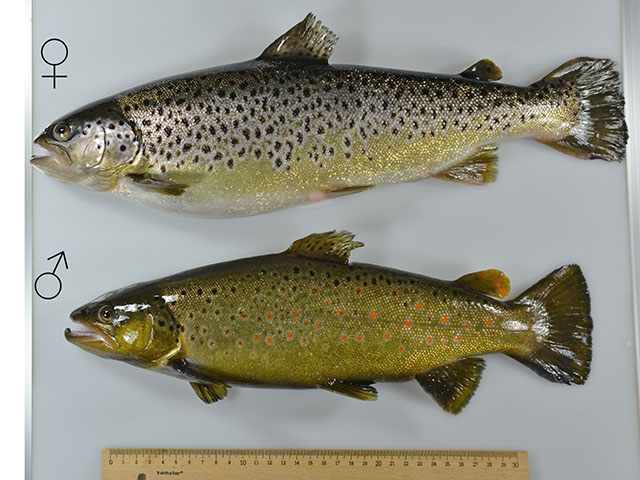| Salmonidae (Salmonids), subfamily: Salmoninae |
| 80 cm SL (male/unsexed) |
|
demersal; freshwater; brackish; marine, anadromous |
| Eurasia: rivers draining to Black Sea; Lipkovska stream in upper Vardar drainage (Macedonia). |
|
Distinguished from congeners in Black Sea basin by its unique caudal fin only slightly emarginate and yellow or orange eggs, about 5 mm in diameter. Can be further separated from other species of the genus by having 16-18 gill rakers, usually 18 ( vs. 13-18, usually 16, in Salmo trutta) (Ref. 59043). |
| There are anadromous, lacustrine and resident forms. At the sea, it occurs along coasts at depths of up to 50 m. Undertakes migration to hill streams. Resident part of populations live in streams and uppermost reaches with fast current, cold clear water and stone or gravel bottom. Spawns in upper reaches with fast current. Spawns in October-January. Parrs live in rivers and streams for 2-4 years, then smoltify and migrate to sea or mature in freshwater. Spends 2-4 years in the sea. Parrs and resident adults feed on aquatic and terrestrial invertebrates. Anadromous and large lacustrine individuals prey mostly on fish and large crustaceans. Anadromous individuals feed while in rivers. Damming hinders most returning adults to reach spawning sites (Ref. 59043). |
|
Least Concern (LC); Date assessed: 05 March 2010 Ref. (130435)
|
| harmless |
Source and more info: www.fishbase.org. For personal, classroom, and other internal use only. Not for publication.
